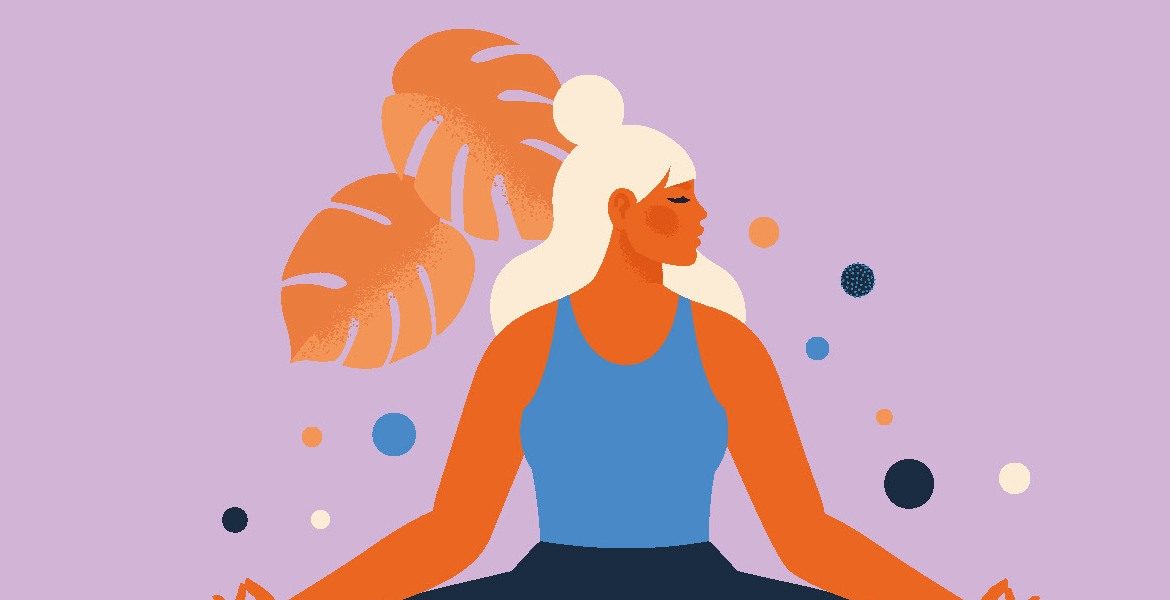Just breathe
Known for centuries as a practice to find some peace and clarity, the outcomes of meditation have stayed relatively the same, only its clientele has shifted somewhat dramatically. It’s estimated that 200-500 million people* meditate worldwide, with apps such as Calm, Headspace and Meditopia topping the app charts, all geared around the smart phone generation. So, the benefits must be pretty darn good to account for its surge in popularity, right? Indeed, meditation developer and composer Greta Andružytė says that the rationale is pretty simple and the benefits are hard to contend with. “Since every system in your body relies on oxygen, by mindfully breathing slower and more deeply, it increases the supply of oxygen to your brain and stimulates the parasympathetic nervous system, promoting an overall state of calmness in your body.”
Let it flow
It makes sense, too. Between work, family commitments and ensuring you’re getting a good night’s sleep, your to-do list can seem pretty endless and, on some days, there’s barely enough time for a five-minute tea break. Greta points to the fact that daily stresses are mostly unavoidable, but it’s how you respond to them that can provide a sense of calmness and relaxation. Deep breathing is a great way to do this, she says. “Deep abdominal breathing encourages full oxygen flow, slowing down the heartbeat and stabilising blood pressure. This practice will help you to concentrate on slow, deep breaths, allowing you to disengage from any distracting thoughts and sensations.”
Practice makes perfect
When someone tells you that they’ve tried meditating, a common follow-up response is normally that they’re not very good at it, but becoming a real master of meditation is neither here nor there, says Alan Dolan, founder of Breathguru (breathguru.com). “If someone feels that they’re struggling with meditation, I would say that they may have misunderstood the objective; the concept of being ‘good’ or ‘bad’ at meditation is erroneous. If you’re able to sit for five minutes simply observing your internal processes, then you’re meditating. This leads to an ability to focus, an increased sense of calm and improved quality of sleep.” This might be a revelation for some, so how can you hook it onto your daily routine? A little and often approach is recommended by Greta. “Forget about judging, overthinking and formalities. Just sit, focus on your own breath and let the distractors come and go. Don’t rush your practice and start slowly for five minutes. Then, gradually add on one to two minutes, but make sure this is the everyday routine.”
Meditation in minutes
Up your mind game and carve out some time to bring awareness to your thoughts, feelings and physical sensations
• Find a comfortable meditation position. This can be seated on the floor with your legs crossed or on a chair with your feet firmly on the floor.
• Close your eyes and switch your attention to your breath. Notice the cool air entering the nostrils on your inhale and the warm air leaving on your exhale.
• Begin to deepen your breath.
• Take your awareness to the top of your head and begin to scan down slowly through your body, becoming aware of the physical sensations and emotions that are present in each part of your body.
• Switch the focus away from everything in your internal world and really become aware and present of your internal space.
• When you get to your toes, reverse the process so you begin to scan upwards through your entire body.
• Keep repeating this slowly, up and down
• Notice how your body and mind are now feeling from just 10 minutes of stillness.




















